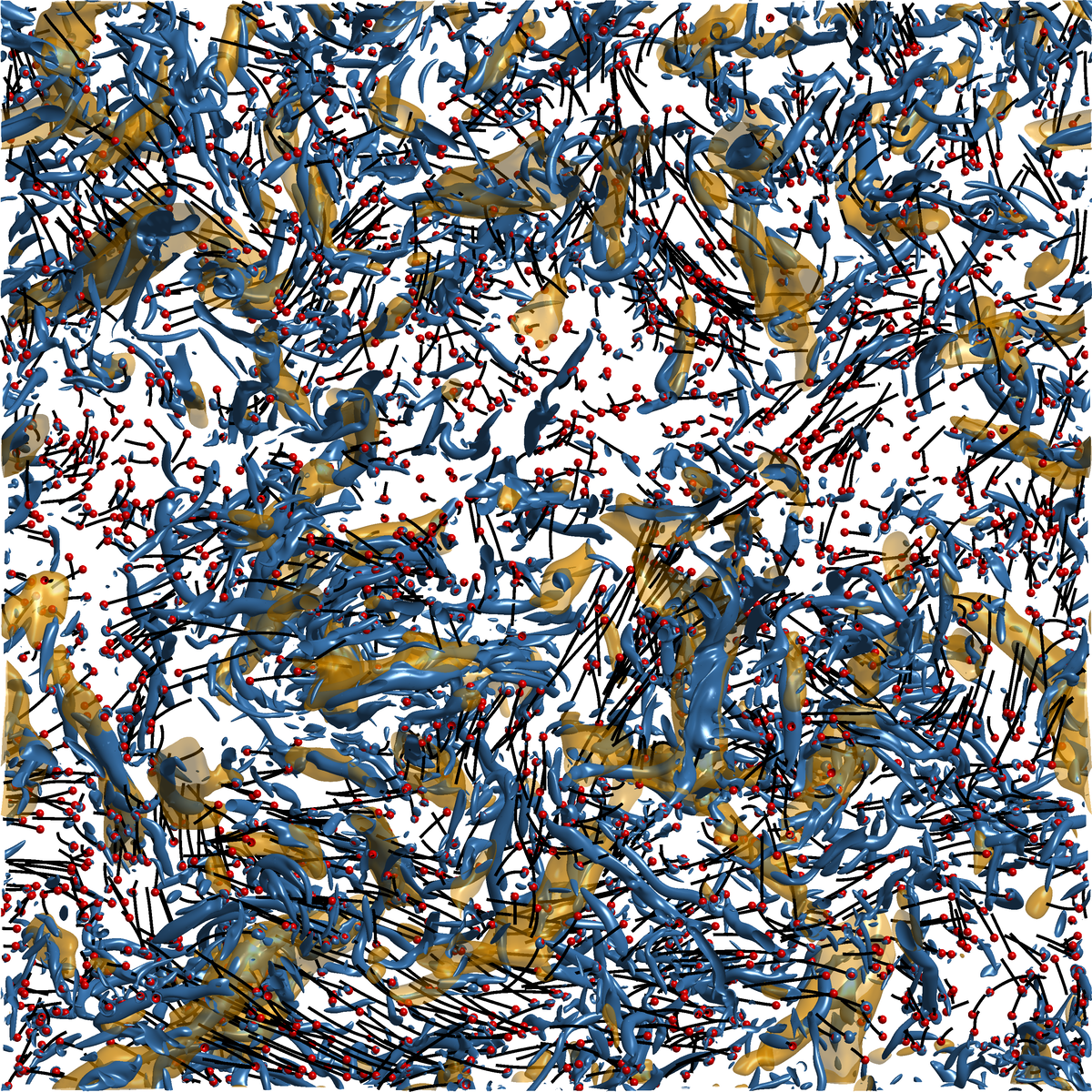Particles in unbounded flows
The interaction between a fluid medium and suspended solid particles is a highly intriguing dynamical process which is at play in many natural and technical systems. Predicting the particle motion and its feed-back upon the fluid flow has been a challenge for engineers and scientists alike for a long time. Particulate flow phenomena include the emergence of heterogeneous spatial distributions of the disperse phase, with important practical consequences: how fast does a particle collective settle uner gravity? How does turbulence affect the inter-particle collision frequency? How does the presence of particles impact the turbulence characteristics?
Modern experimental techniques and high-fidelity numerical simulations are able to provide data at unprecedented resolution. Based upon this information we are attempting to unravel some of the long-standing open questions in the field. Below you can find a short list of related publications from our work.
[1] A. Chouippe and M. Uhlmann. On the influence of forced homogeneous-isotropic turbulence on the settling and clustering of finite-size particles. Acta Mechanica, 230:387--412, 2019 [DOI]
[2] M. Uhlmann and A. Chouippe. Clustering and preferential concentration of finite-size particles in forced homogeneous-isotropic turbulence. J. Fluid Mech., 812:991--1023, 2017 [DOI]








